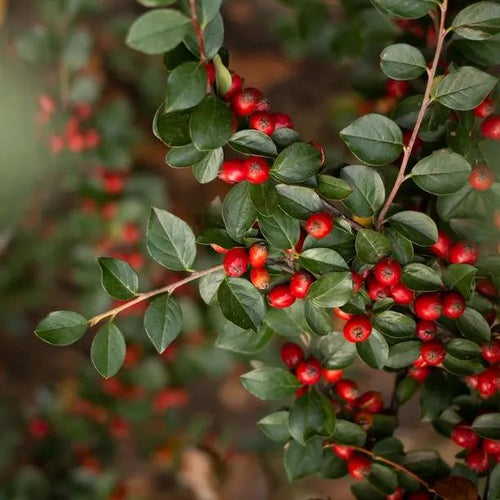Cotoneaster simonsii Hedge Plants
Himalayan Cotoneaster is a strong growing, upright, semi-evergreen shrub that clips neatly as a hedging plant. Cotoneaster simonsii is almost evergreen; it keeps its leaves in a mild winter and loses them, usually in late winter, if the weather is harsh. This is normal and doesn't hurt the plants.
Its small, dense leaves make it ideal for hedging and it responds well to regular clipping if you want to keep it really neat. It has lots of charming, tiny flowers in spring and bright red berries in autumn and early winter. Cotoneaster simonsii is good for hedges up to about 2 metres high. It's often planted in a mixed hedge with the Orange Berried Cotoneaster franchetii for a bit more colour.
Browse all of our other varieties of Cotoneaster shrubs & trees. Alternatively, see our selection of coastal hedging or view our full range of hedging plants.
Bareroot hedge plants are delivered bareroot during winter (Nov-Apr) and are measured by their height in centimetres above the ground (the roots aren't measured).

 Secure, One-Tap Checkout
Secure, One-Tap Checkout
 Hand Picked, Delivered to Your Door!
Hand Picked, Delivered to Your Door! 1 Year Bareroot Guarantee
1 Year Bareroot Guarantee






